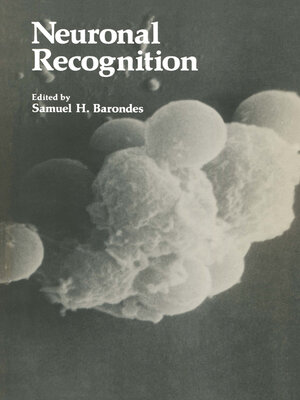
Sign up to save your library
With an OverDrive account, you can save your favorite libraries for at-a-glance information about availability. Find out more about OverDrive accounts.
Find this title in Libby, the library reading app by OverDrive.



Search for a digital library with this title
Title found at these libraries:
| Library Name | Distance |
|---|---|
| Loading... |
An outstanding characteristic of the nervous system is that neurons make selective functional contacts. Each neuron behaves as if it recog nizes the neurons with which it associates and rejects associations with others. The specific interneuronal relationships that result define the innate neuronal circuits that determine the functioning of this system. The purpose of this volume is to present some approaches to the problem of neuronal recognition. The volume has been somewhat arbitrarily divided into three sections. In the first section, the overrid ing theme is the degree of specificity of neuronal recognition. How specific is specific? Is the specificity so precise that the neurites of one neuron will only make synaptic contact with a unique target neuron? If less precise, within what range? Are the rules for specification that are operative in the embryo still operative at the same level of precision when connections regenerate in the mature organism? Are they still operative in dissociated tissue grown in culture? The second section of this volume contains reviews of morphologi cal studies of synaptogenesis and biochemical studies of synaptic com ponents. Can the morphology of developing cellular contacts provide clues about selectivity? Can the chemical components of synaptic junc tions be isolated and characterized? Do they include resolvable compo nents that mediate neuronal recognition? The third section contains studies seeking to identify the existence of specific molecules that might mediate cellular recognition. A major question here is whether molecules of this type even exist.







